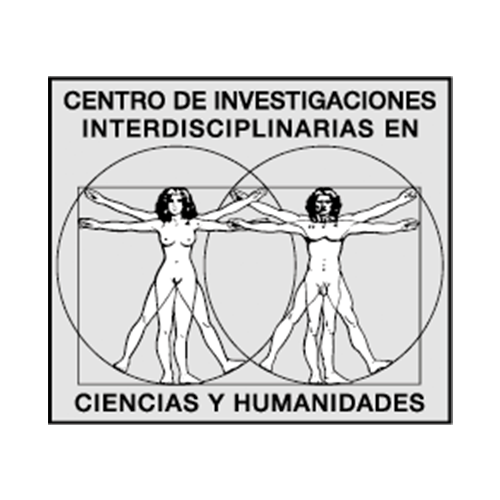Resolución atómica de elementos ligeros utilizando HAADF y ABF-STEM con corrección de Cs y bajo voltaje
Contenido principal del artículo
Resumen
Microscopía electrónica de transmisión/barrido (STEM) ofrece información estructural y química del orden de 0.1 nm de resolución espacial, tal resolución es llevada a cabo mediante el corrector de aberración esférica. En el STEM, un haz de electrones es enfocado y escaneado sobre la muestra, por lo que la imagen es formada midiendo la señal electrónica que surge después de las interacciones electrones-muestra. La señal de los electrones dispersados puede ser empleada para obtener imágenes de campo claro y campo obscuro. El microscopio STEM es un poderoso instrumento para estudiar las propiedades físicas de las nanoestructuras, que requieren de un análisis estructural y químico a nivel atómico. Por lo tanto, STEM es una técnica capaz de identificar la posición de los átomos y las columnas atómicas. En este trabajo, los parámetros instrumentales básicos del microscopio antes de sus aplicaciones fueron evaluados. Además, imágenes experimentales de campo oscuro anular de alto ángulo (HAADF)-STEM y campo claro anular (ABF)-STEM de una muestra de LaAlO3 fueron obtenidas a bajos voltajes de operación y comparadas con imágenes simuladas obtenidas con el método de multicapas. Se encontró que las imágenes simuladas coinciden bien con las imágenes experimentales.
Descargas
Detalles del artículo

Mundo Nano. Revista Interdisciplinaria en Nanociencias y Nanotecnología, editada por la Universidad Nacional Autónoma de México, se distribuye bajo una Licencia Creative Commons Atribución-NoComercial 4.0 Internacional.
Basada en una obra en http://www.mundonano.unam.mx.
Citas
Barthel, J. (2007). http://www.er-c.org/barthel/drprobelight/
Bell, D. C., C. J. Russo y D. V. Kolmykov. (2012). 40 keV atomic resolution TEM. Ultramicroscopy, 114: 31-37. https://doi.org/10.1016/j.ultramic.2011.12.001 DOI: https://doi.org/10.1016/j.ultramic.2011.12.001
Benetatos, N. M., B. W. Smith, P. A. Heiney y K. I. Winey. (2005). Toward reconciling STEM and SAXS data from ionomers by investigating gold nanoparticles. Macromolecules, 38: 9251-9257. https://doi.org/10.1021/ma051419i DOI: https://doi.org/10.1021/ma051419i
Cowley, J. M. (1986). Electron diffraction phenomena observed with a high resolution STEM instrument. Journal of Electron Microscopy Technique, 3: 25-44. https://doi.org/10.1002/jemt.1060030105 DOI: https://doi.org/10.1002/jemt.1060030105
Cowley, J. M. y A. F. Moodie. (1957). The scattering of electrons by atoms and crystals. I. A new theoretical approach. Acta Crystallographica, 10: 609-619. https://doi.org/10.1107/S0365110X57002194 DOI: https://doi.org/10.1107/S0365110X57002194
Crewe, A. V., J. Wall y J. Langmore. (1970). Visibility of single atoms. Science, 168 (3937): 1338-1340. https://doi.org/10.1126/science.168.3937.1338 DOI: https://doi.org/10.1126/science.168.3937.1338
Dupouy, G. (2017). Chapter four – Electron microscopy at very high voltages. En Advances in Imaging and Electron Physics. Elsevier, 261-340. DOI: https://doi.org/10.1016/bs.aiep.2017.05.001
Dwyer, C. (2010). Simulation of scanning transmission electron microscope images on desktop computers. Ultramicroscopy, 110(3): 195-198. https://doi.org/10.1016/j.ultramic.2009.11.009 DOI: https://doi.org/10.1016/j.ultramic.2009.11.009
Esparza, R., A. F. García-Ruiz, J. J. Velázquez Salazar, R. Pérez y M. J. Yacamán. (2013). Structural characterization of Pt-Pd core–shell nanoparticles by Cs–corrected STEM. Journal of Nanoparticle Research, 15(1): 1342. https://doi.org/10.1007/s11051-012-1342-2 DOI: https://doi.org/10.1007/s11051-012-1342-2
Esparza, R., O. Téllez-Vázquez, G. Rodríguez-Ortiz, A. Ángeles-Pascual, S. Velumani y R. Pérez. (2014). Atomic structure characterization of Au-Pd bimetallic nanoparticles by aberration–corrected scanning transmission electron microscopy. The Journal of Physical Chemistry C, 118(38): 22383-22388. https://doi.org/ 10.1021/jp507794z DOI: https://doi.org/10.1021/jp507794z
Findlay, S. D., N. Shibata, H. Sawada, E. Okunishi, Y. Kondo, T. Yamamoto y Y. Ikuhara. (2009). Robust atomic resolution imaging of light elements using scanning transmission electron microscopy. Applied Physics Letters, 95: 191913. https://doi.org/10.1063/1.3265946 DOI: https://doi.org/10.1063/1.3265946
Garcia, A., A. M. Raya, M. M. Mariscal, R. Esparza, M. Herrera, S. I. Molina, G. Scavello, P. L. Galindo, M. J. Yacamán y A. Ponce. (2014). Analysis of electron beam damage of exfoliated MoS2 sheets and quantitative HAADF–STEM imaging. Ultramicroscopy, 146: 33-38. https://doi.org/10.1016/j.ultramic.2014.05.004 DOI: https://doi.org/10.1016/j.ultramic.2014.05.004
Geuens, P. y D. Van Dyck. (2003). About forbidden and weak reflections. Micron, 34: 167-171. https://doi.org/10.1016/S0968-4328(03)00032-5 DOI: https://doi.org/10.1016/S0968-4328(03)00032-5
Haider, M., S. Uhlemann y J. Zach. (2000). Upper limits for the residual aberrations of a high–resolution aberration–corrected STEM. Ultramicroscopy, 81(3-4): 163-175. https://doi.org/10.1016/S0304-3991(99)00194-1 DOI: https://doi.org/10.1016/S0304-3991(99)00194-1
Haider, M., P. Hartel, H. Müller, S. Uhlemann y J. Zach. (2009). Current and future aberration correctors for the improvement of resolution in electron microscopy. Philosophical Transactions of the Royal Society A, 367: 3665-3682. https://doi.org/ 10.1098/rsta.2009.0121 DOI: https://doi.org/10.1098/rsta.2009.0121
Haider, M., S. Uhlemann, E. Schwan, H. Rose, B. Kabius y K. Urban. (1998). Electron microscopy image enhanced. Nature, 392(6678): 768-769. https://doi.org/10.1038/33823 DOI: https://doi.org/10.1038/33823
Hawkes, P. W. (2004). Advances in imaging and electron physics: Elsevier.
Huang, R., H. C. Ding, W. I Liang, Y. C. Gao, X. D. Tang, Q. He, C. G. Duan, Z. Zhu, J. Chu, C. A. J. Fisher, T. Hirayama, Y. Ikuhara y Y. H. Chu. (2014). Atomic scale visualization of polarization pinning and relaxation at coherent BiFeO3/LaAlO3 interfaces. Advanced Functional Materials, 24(6): 793-799. https://doi.org/10.1002/adfm.201301470 DOI: https://doi.org/10.1002/adfm.201301470
Ishikawa, R., E. Okunishi, H. Sawada, Y. Kondo, F. Hosokawa y E. Abe. (2011). Direct imaging of hydrogen–atom columns in a crystal by annular bright–field electron microscopy. Nature Materials, 10(4): 278-281. https://doi.org/10.1038/nmat2957 DOI: https://doi.org/10.1038/nmat2957
James, E. M. y N. D Browning. (1999). Practical aspects of atomic resolution imaging and analysis in STEM. Ultramicroscopy, 78: 125-139. https://doi.org/10.1016/S0304-3991(99)00018-2 DOI: https://doi.org/10.1016/S0304-3991(99)00018-2
Jones, L., K. E. MacArthur, V. T. Fauske, A. T. J. van Helvoort y P. D. Nellist. (2014). Rapid estimation of catalyst nanoparticle morphology and atomic–coordination by high–resolution Z–contrast electron microscopy. Nano Letters, 14: 6336-6341. https://doi.org/10.1021/nl502762m DOI: https://doi.org/10.1021/nl502762m
Kirkland, E. J., R. F. Loane y J. Silcox. (1987). Simulation of annular dark field stem images using a modified multislice method. Ultramicroscopy, 23: 77-96. https://doi.org/10.1016/0304-3991(87)90229-4 DOI: https://doi.org/10.1016/0304-3991(87)90229-4
Klenov, D. O., D. G. Schlom, H. Li y S. Stemmer. (2005). The interface between single crystalline (001) LaAlO3 and (001) silicon. Japanese Journal of Applied Physics, 44 (5L): L617. https://doi.org/10.1143/JJAP.44.L617 DOI: https://doi.org/10.1143/JJAP.44.L617
Klie, R. F. y Y. Zhu. (2005). Atomic resolution STEM analysis of defects and interfaces in ceramic materials. Micron, 36(3): 219-231. https://doi.org/10.1016/j.micron.2004.12.003 DOI: https://doi.org/10.1016/j.micron.2004.12.003
Koch, C. (2002). Determination of core structure periodicity and point defect density along dislocations. USA: Arizona State University.
Kotaka, Y. (2012). Direct visualization method of the atomic structure of light and heavy atoms with double–detector Cs–corrected scanning transmission electron microscopy. Applied Physics Letters, 101(13): 133107. https://doi.org/10.1063/1.4756783 DOI: https://doi.org/10.1063/1.4756783
Lee, P. W., V. N. Singh, G. Y. Guo, H. -J. Liu, J. -C. Lin, Y. -H. Chu, C. H. Chen y M. -W. Chu. (2016). Hidden lattice instabilities as origin of the conductive interface between insulating LaAlO3 and SrTiO3. Nature Communications, 7: 12773. https://doi.org/10.1038/ncomms12773 DOI: https://doi.org/10.1038/ncomms12773
Maurice, J. L., C. Carrétéro, M. J. Casanove, K. Bouzehouane, S. Guyard, É. Larquet y J. P. Contour. (2006). Electronic conductivity and structural distortion at the interface between insulators SrTiO3 and LaAlO3. Physica Status Solidi, 203(9): 2209-2214. https://doi.org/10.1002/pssa.200566033 DOI: https://doi.org/10.1002/pssa.200566033
Mayoral, A., R. Esparza, F. L. Deepak, G. Casillas, S. Mejía–Rosales, A. Ponce y M. J. Yacamán. (2011). Study of nanoparticles at UTSA: one year of using the first JEM-ARM200F installed in USA. Jeol News, 46 (1): 1-5.
Mishra, R., R. Ishikawa, A. R. Lupini y S. J. Pennycook. (2017). Single–atom dynamics in scanning transmission electron microscopy. MRS Bulletin, 42(9): 644-652. https://doi.org/10.1557/mrs.2017.187 DOI: https://doi.org/10.1557/mrs.2017.187
Okunishi, E., I. Ishikawa, H. Sawada, F. Hosokawa, M. Hori y Y. Kondo. (2009). Visualization of light elements at ultrahigh resolution by stem annular bright field microscopy. Microscopy and Microanalysis, 15(S2): 164-165. https://doi.org/10.1017/S1431927609093891 DOI: https://doi.org/10.1017/S1431927609093891
Pennycook, S. J., D. E. Jesson, A. J. McGibbon y P. D. Nellist. (1996). High angle dark field STEM for advanced materials. Microscopy, 45(1): 36-43. https://doi.org/10.1093/oxfordjournals.jmicro.a023410 DOI: https://doi.org/10.1093/oxfordjournals.jmicro.a023410
Rodenburg, J. M. y E. B. Macak. (2002). Optimising the resolution of TEM/STEM with the electron ronchigram. Microscopy and Analysis, 5-7.
Rodríguez–Proenza, C. A., J. P. Palomares–Báez, M. A. Chávez–Rojo, A. F. García–Ruiz, C. L. Azanza–Ricardo, A. Santoveña–Uribe, G. Luna–Bárcenas, J. L. Rodríguez–López y R. Esparza. (2018). Atomic surface segregation and structural characterization of PdPt bimetallic nanoparticles. Materials, 11(10): 1882. https://doi.org/10.3390/ma11101882 DOI: https://doi.org/10.3390/ma11101882
Sasaki, T., H. Sawada, F. Hosokawa, Y. Kohno, T. Tomita, T. Kaneyama, Y. Kondo, K. Kimoto, Y. Sato y K. Suenaga. (2010). Performance of low–voltage STEM/TEM with delta corrector and cold field emission gun. Journal of Electron Microscopy, 59(S1): S7-S13. https://doi.org/10.1093/jmicro/dfq027 DOI: https://doi.org/10.1093/jmicro/dfq027
Sawada, H., T. Sannomiya, F. Hosokawa, T. Nakamichi, T. Kaneyama, T. Tomita, Y. Kondo, T. Tanaka, Y. Oshima, Y. Tanishiro y K. Takayanagi. (2008). Measurement method of aberration from ronchigram by autocorrelation function. Ultramicroscopy, 108(11): 1467-1475. https://doi.org/10.1016/j.ultramic.2008.04.095 DOI: https://doi.org/10.1016/j.ultramic.2008.04.095
Spence, J. C. H. (2013). High–resolution electron microscopy. OUP Oxford. DOI: https://doi.org/10.1093/acprof:oso/9780199668632.001.0001
Zhou, D., K. Müller–Caspary, W. Sigle, F. F. Krause, A. Rosenauer y P. A. van Aken. (2016). Sample tilt effects on atom column position determination in ABF–STEM imaging. Ultramicroscopy, 160: 110-117. https://doi.org/10.1016/j.ultramic.2015.10.008 DOI: https://doi.org/10.1016/j.ultramic.2015.10.008





